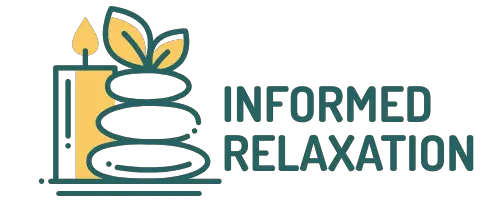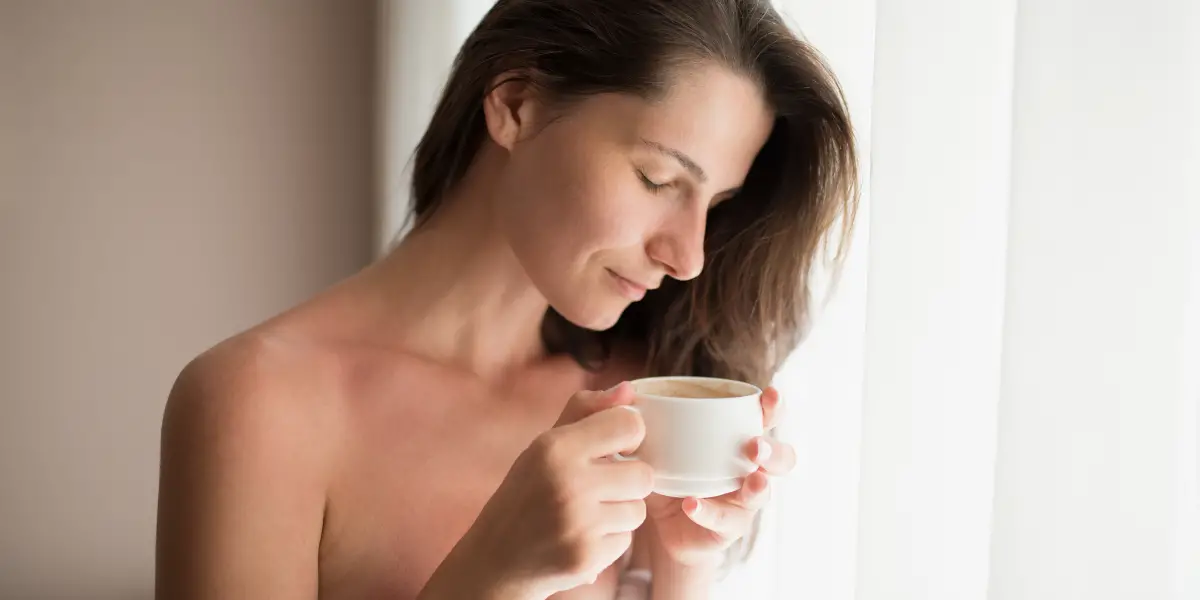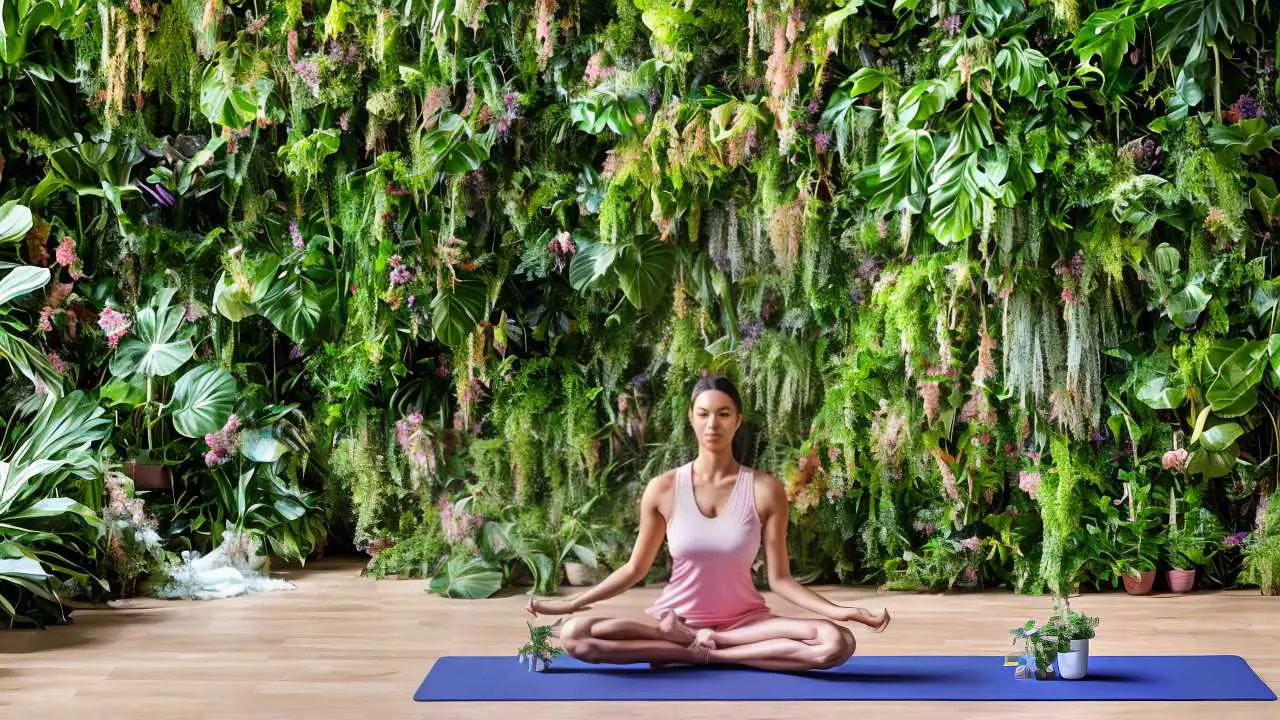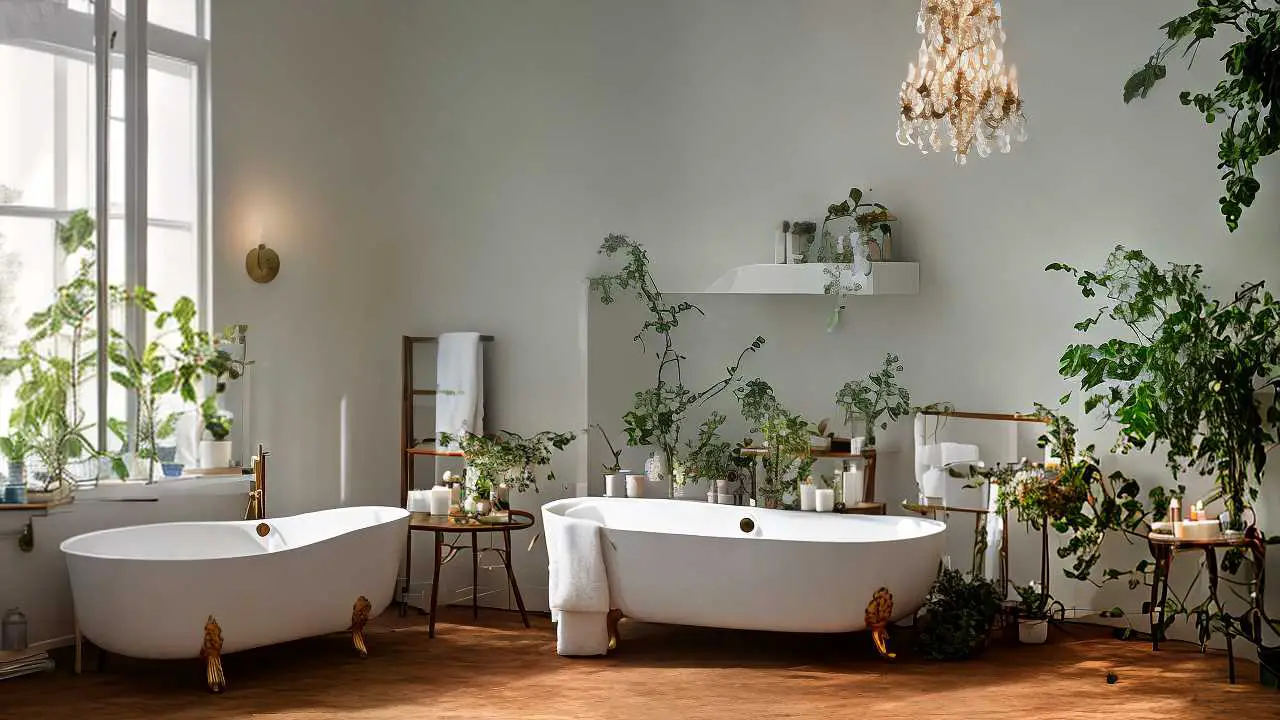Many of us struggle with our mental health and having a clear mind can be difficult. Finding ways to relax our minds can be extremely beneficial, as it will help us to be more productive and in control of our emotions. From yoga to journaling, there are plenty of ways to find relaxation and improve our mental well-being.
In this article, we’re going to explore some tips and tricks on how to get relaxation of mind:
Benefits of Relaxation
Relaxation involves releasing physical and mental tension, which often results in a refreshed, energized feeling. When practiced regularly, relaxation can have a number of beneficial effects on your overall physical and mental wellbeing.
Relaxation can help manage stress levels as it releases stress hormones, such as cortisol and adrenaline, from the body.
Additionally, relaxation can improve cognitive functioning by allowing for improved focus and concentration – two attributes necessary for overall productivity.
Furthermore, relaxation helps elicit calmness thereby allowing individuals to think more objectively; making difficult decisions with both logic and emotion in mind instead of relying solely on one’s emotional state of being.
Physically, relaxation helps reduce muscle tension caused by overwork or physical strain which often leads to conditions such as chronic pain or other medical ailments.
Relaxation is known to lead to deep restful sleep in contrast to restlessness that usually follows an exacerbation of physical tension.
High quality sleep is essential for our bodies to repair themselves each night so we are ready for the following day.
Finally, relaxation can improve one’s mood due to a release of endorphins in the brain responsible for increased feelings of happiness or wellbeing.
Physical Relaxation
Physical relaxation is an important part of overall mental relaxation. It is possible to reduce tension and release stress in the body through physical activities such as deep breathing, stretching, and massage. Physical relaxation can also help to induce a state of relaxation in the mind, allowing you to let go of negative thoughts and worries and gain a sense of calm and peace.
Let’s look at more ways to incorporate physical relaxation into your life:
Exercise
Regular physical activity is essential for a healthy mind and body. It helps to regulate your hormones, meaning that regular exercise can help reduce stress levels. Regular physical activity release endorphins which can interact with the neurotransmitters that regulate mood and alleviate depression, anxiety, and stress.
Exercise can also reduce the levels of cortisol in your body, which is commonly known as the “stress hormone“.
Lowering cortisol levels has been known to lead to better sleep habits, reduced bouts of insomnia and improved alertness during the day.
Additionally, exercise helps promote strong bones and muscle growth while improving cognitive skills such as memory recall, problem-solving ability and creativity.
Including at least 30 minutes of moderate-intensity exercise into your daily routine can help you rest better at night and feel more relaxed during times of stress or anxiety.
For maximum benefit, it’s important to mix up your workout routine with a variety of activities such as:
- Running
- Biking
- Strength training
- Pilates
Whatever you choose should make you feel happy!
Yoga
Yoga can be a powerful relaxation practice to help clear the mind and reduce stress. Research studies show that yoga effectively decreases tension and anxiety, particularly in people facing stressful situations.
Practicing yoga postures, also known as asanas, is a popular way of achieving physical relaxation. These postures help to elongate and relax the body’s muscles.
Yoga breathing techniques called pranayama are also used to improve oxygen levels in the body while calming the nervous system.
Deep breathing exercises are likely to help achieve relaxation both mentally and physically.
Yoga incorporates mental practices that can bring calmness in addition to its physical postures. During a session, participants are encouraged to focus on their breath or savor quiet moments throughout their practice.
This helps bring awareness of what is happening in our bodies while teaching concentration and mindfulness, helping you stay focused in the present moment without drifting off into thoughts of past or future occurrences.
Yoga helps release tension throughout body areas such as your shoulders, neck and face by increasing circulation to stressed areas while allowing for more flexibility in your limbs and joints.
In turn, it can also reduce muscle fatigue as well as high blood pressure caused by stress levels in reaction to emotional stressors or daily activities such as work demands or family obligations.
When practiced regularly, yoga can be an empowering tool for physical relaxation from your regular activities, aiding both mental clarity and wellbeing overall.
Massage
Massage provides physical relaxation by calming the body both mentally and physically. It is known for providing relief from stress, muscle soreness, anxiety, and fatigue. Massage works to reduce blood pressure and heart rate, helping you to stay calm and relaxed throughout your day.
There are many different types of massage that can provide different benefits depending on your needs:
- Swedish massage utilizes oils or lotions combined with long strokes, kneading, friction, tapping and vibration techniques to relax muscles and promote circulation throughout the body.
- Deep tissue massage is used to target deeper layers of muscle and connective tissue found in the body.
- Shiatsu massage also uses kneading techniques but applies pressure using thumbs and palms instead of fingers.
- Trigger-point therapy focuses on specific points of pain in the body that experience increased muscle tension when touched or manipulated.
Also see: The Difference Between Relaxation vs Therapeutic Massage
No matter which type of massage you choose it can be highly beneficial for promoting physical relaxation as well as reducing pain levels or relieving stress throughout the body.
When selecting a masseuse, be sure to find one who is professionally trained in whichever technique you hope to gain from receiving a massage session.
Breathing Exercises
Breathing exercises are a form of relaxation that allow you to refocus on your breathing pattern. This technique helps to clear your mind and alleviate feelings of stress, anxiety and tension in your body. It can also promote improved sleep and help reduce headaches, insomnia, depression and fatigue.
When you practice breathing exercises, start by sitting in a comfortable position with your eyes closed. Take a few moments to allow yourself to relax both mentally and physically. Make sure that your back is straight but not rigid – this will enable air to flow more freely throughout your body.
Once you are comfortably relaxed, begin inhaling through the nose for four counts, counting silently in your head as you do so.
Then exhale through the mouth for four counts without stressing yourself or pushing it beyond what’s comfortable for you.
Keep breathing slowly at this cadence until the count of 10 is reached and then repeat the exercise with each breath taking approximately four seconds (it’s normal if some breaths take longer or shorter).
You can increase or decrease the breath count depending on what feels best for you, but aim to establish a regular pattern so that it becomes more natural over time.
The key with any relaxation activity is to be mindful and focus on each breath as it passes through your body – becoming aware of each pause between inhalation and exhalation while releasing any existing tension from the muscles in your face, neck and shoulders at each stage throughout the exercise.
Mental Relaxation
Mental relaxation is of paramount importance for all of us, as it helps us to manage our stress and emotions better. Stress and emotional issues can have grave consequences when not managed properly.
There are a few ways of mental relaxation that may be helpful in these times. It is important to relax mentally in order to keep our bodies and minds healthy. In this article, we’ll look at some exercises that can help you manage stress and relax your mind:
Meditation
Meditation is a practice that has been used to relax the mind since ancient times. It is a simple and gentle technique that helps to clear the mind and find inner peace.
It can be used as a form of stress management, helping to reduce tension and anxiety, and create a more relaxed state of being.
The aim of meditating is to help you become more aware of your present moment experience. To do this, you focus your attention on something – such as the breath – without judgment or analysis.
Your thoughts may wander at first but with practice, you learn how to detach yourself from them in order to bring yourself back into right here right now. Meditation gives you an opportunity to step back from all the distractions in life and just take some time for yourself.
The mental benefits of meditation include:
- Improved concentration
- Increased clarity
- Heightened creativity
- Better problem-solving capabilities
While physical benefits can include:
- A reduction in heart rate
- Improved sleep
- An increase in physical relaxation
Regular practice can also help reduce negative emotions such as anger or fear. You’ll also improve your mood overall by fostering positivity!
Mindfulness
Mindfulness practice is a simple and powerful way to gain relaxation of the mind. The practice involves being more aware of the present-moment experience and living with more intention.
By focusing our attention on the moment, we can reduce stress, ruminating thoughts, and worry by shifting our perspective and deepening our awareness.
Being mindful can help us find clarity within ourselves so that we are better equipped to respond to life’s challenges with greater wisdom and compassion.
Some simple ways to practice mindfulness include:
- Taking moments throughout the day for deep breathing.
- Observing nature or other sights around you.
- Questioning yourself about your values or purpose in life.
- Using visualization techniques (including choosing a peaceful place in your mind).
- Becoming mindful of your body movements or gestures throughout the day.
- Trying mindfulness activities like yoga or meditating for brief periods of time.
Through small but consistent practice, creating awareness will become easier over time; eventually leading to increased inner peace and harmony in life.
Visualization
Visualization is a powerful mental relaxation technique that helps reduce stress, anxiety, fatigue and irritability.
With visualization, a person creates an image in their mind that brings positive feelings while they concentrate on the situation they are trying to relax from.
By making use of the imagination, the person can imagine the environment in which they want to be to achieve greater levels of mental relaxation.
The type of visualization used can depend on personal preference and desired emotion; it may be helpful to use calming imagery such as nature scenes or peaceful music.
During the visualization process one should focus on letting go and bringing themselves out of the stressful situation or mood into a calmer space where they can gain control over difficult emotions.
Using visualization for mental relaxation does not require any physical means, but it does require you to concentrate on your senses such as sight, sound and feeling.
The ability to build up an image in your mind is an important skill for inducing relaxation and relieving stress, so it is beneficial even if you have difficulty focusing at first.
Visualization can take several minutes which may feel like hours when you are deeply relaxed depending upon how deep one’s concentration becomes with this exercise.
Practicing regular visualization will help many people gain better control over their body’s energy and emotions.
Emotional Relaxation
Emotional relaxation is an important part of any endeavor to find peace of mind. By learning to manage your emotions and reduce anxiety, you can create a calm and peaceful state that lets you focus on your goals.
In this section, we’ll cover how to achieve emotional relaxation and find greater peace of mind:
Journaling
Journaling is a powerful tool for emotional relaxation. Writing about your feelings and experiences can help to create clarity and understanding, as well as provide an outlet for stress relief. When journaling, you have the opportunity to safely express thoughts and allow yourself the time to review your issues from a different perspective.
Studies have shown that people who keep a journal experience improved mental health, reduced stress levels, and a greater sense of happiness.
Writing about your successes, difficulties, beliefs, emotions, and goals can propel personal growth with the potential to offer insight into new solutions or perspectives on life’s challenges.
In addition to its therapeutic benefits, keeping a journal can also be beneficial in reaching personal goals; by writing down plans and tracking progress it is possible to further refine strengths while fostering improvement in areas of development.
Additionally, it can help individuals identify patterns among their thoughts or emotions so they can begin making necessary changes in life-harming behaviors.
Journaling has become increasingly popular due its many practical benefits such as increased self-awareness and improved mood management proficiency; however its biggest advantage might be providing access to one’s own hidden power for achieving emotional relaxation; forming a bridge between mental health awareness and true mindful balance.
Art Therapy
Art therapy is a form of psychotherapy that uses art as the primary mode of expression and communication.
This type of therapy invites people to use their creative or artistic expression to explore their emotions, address personal conflicts, help reach personal goals and even reduce stress.
By engaging in art-making with the guidance of an art therapist, you can experience physical and emotional relaxation in a calming environment.
Art therapy involves activities such as drawing, painting, coloring, sculpting, and mixed-media projects which can be creative avenues for self-discovery and inner growth.
The art therapist follows your individual experience with directing conversations about each work of art you create that allow for exploration of feelings.
Most sessions might involve listening to how you think and feel about your completed artwork which could be used as a form of self-expression.
In addition to reducing stress levels through practicing mindfulness such as focusing on creating your artwork (independent from any prior skills or capabilities), researching supports that much like other therapies (such as cognitive behavioral therapy), practicing art making activates dopamine pathways associated with comfort.
Increased focus upon motor movements used while making something with your hands is thought to contribute to the relaxation response allowing individuals to connect more deeply with their internal experience than typically done through verbal communication alone.
Art therapists will often tailor approaches specifically suited for each individual patient if they are faced with medical diagnoses such as anxiety or depression also serving as a safe space amongst other benefits it may offer by providing individuals an outlet where they can have permission to express thoughts without being judged.
Music Therapy
Music therapy is an evidence-based therapeutic practice that uses music to improve the wellbeing of individuals.
Music therapy interventions can be provided as a form of psychological and physical relaxation for the mind and body, in order to reduce stress levels, improve sleep and overall emotional wellbeing.
Music therapists are trained professionals who assess, plan and implement music-based interventions to meet the individual needs of their clients.
The purpose of music therapy is to facilitate one’s own innate healing processes through sound and vibration to help with relaxation, alertness, learning and daily performance.
Music therapists use various musical experiences such as guided vocalizations, instrument playing, listening activities and improvisation during therapy sessions.
Music can be used to facilitate relaxation by moving slow rhythms that evoke calming emotions, thereby reducing stress and tension in the body. Listening to certain soothing kinds of music may also aid in relaxation by providing passive distraction from everyday worries or tensions.
Music therapy uses a variety of approaches depending on the individual’s needs such as improvisatory music playing or focused activations where communicative communication is needed between therapist and patient.
Guided imagery paired with music can further relax an individual towards relief from intense emotions or feelings by guiding them through positive visuals related to their concerns or goals.
Music centered around specific themes such as nature sounds or religious texts can also be utilized in order for individuals to connect with faith based practices or pursue meditative states for deeper emotional growth.
Therapeutic songs structured specifically for patients may be used in order again provide positive perspectives on situations leading towards potential solutions.
No matter what type of approach is used within music therapy session its main purpose will remain constant which is helping patients reach states of deep physical restedness or emotional calming which leads ultimately towards reaching mental peace within themselves.
Can relaxation techniques help with calming an overactive mind?
Yes, relaxation techniques can be very effective in calming an overactive mind. Practices such as deep breathing, meditation, and progressive muscle relaxation can help soothe the mind and promote a sense of calm. Engaging in these techniques regularly can lead to lasting benefits in calming an overactive mind.
Can Emptying Your Mind Lead to Relaxation?
Yes, emptying your mind through calming mind techniques can lead to relaxation. By focusing on deep breathing, meditation, or visualization, you can release stress and achieve a sense of peace. Practicing these techniques regularly can help you maintain a calmer mind and promote overall relaxation.
Conclusion
Finally, getting relaxation of mind takes practice and dedication. It’s easy to become overwhelmed with all the stresses and anxieties of everyday life, but finding ways to make time for yourself to relax and de-stress can go a long way in helping you maintain your mental health.
Stay motivated to take some time out of every day for yourself. Some people find that participating in activities such as yoga or meditation can help them destress and relax the mind. Additionally, make sure that you are getting plenty of quality sleep each night, as well as eating a healthy diet, practicing mindful breathing exercises throughout the day, and engaging in physical exercise regularly.
Finding ways to cope positively with stress is essential for reducing its impact on our mental health. It’s also important to practice self-care both mentally and physically on a daily basis so that you can remain focused on achieving your goals. Take some time for yourself each day to fully relax your mind, body and soul – it’s worth it!




